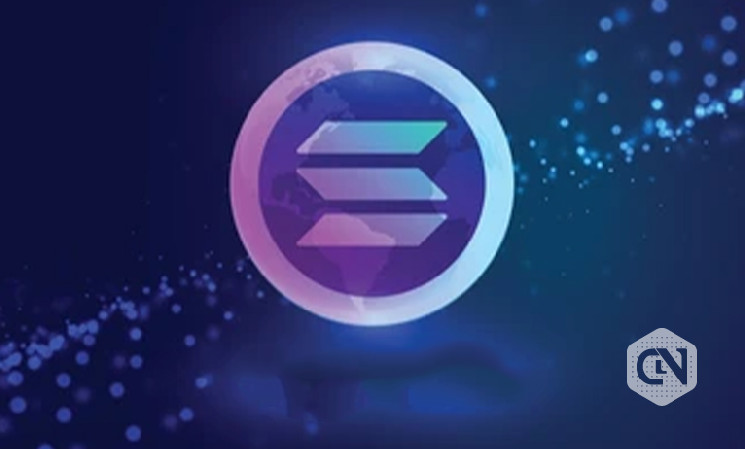Solana was created in 2017 as a blockchain platform for scalable, decentralized applications. This project is now managed as an open-source initiative by the Geneva-based Solana Foundation, with Solana Labs in San Francisco building the blockchain. Solana’s design integrates a decentralized clock with a network of nodes that validate transactions in parallel to remove obstacles and enable linear scalability as the network expands. In this article, detailed information about Solana is provided. Read on to learn more!
Breaking Down the Basics
Solana’s lightning-fast transaction speeds are one of its most unique qualities. Solana uses a special mix of technology, unlike many typical blockchain systems that experience congestion and poor transaction times. The proof-of-history (PoH) consensus process, which timestamps transactions before they are performed, is essential to its speed. By doing so, Solana can arrange events in the best possible sequence, significantly reducing confirmation delays and allowing the network to handle hundreds of transactions every second.
Low transaction costs are yet another essential characteristic that makes Solana unique. Due to ineffective consensus processes or network overload, many blockchain systems suffer from high transaction costs; however, Solana’s novel architecture reduces overhead and computational costs, resulting in noticeably lower fees. Because of its low cost, Solana is a desirable choice for both developers and consumers, especially for applications where scalability and cost-effectiveness are top priorities.
Under the Hood: Unveiling Solana’s Tech
Proof-of-history (PoH) creates a series of cryptographic proofs, each representing a distinct point in time, acting as a decentralized clock. By acting as timestamps of transactions, these proofs enable validators to precisely ascertain the sequence in which transactions are received and processed. Solana facilitates faster and more efficient consensus-building among validators by introducing Proof of Holding (PoH) into the consensus process.
Coordinating the network’s validators to agree on the blockchain’s current state is done via Tower BFT, a variation of the Practical Byzantine Fault Tolerance (PBFT) consensus process. A block is deemed finalized and added to the chain after a supermajority of validators approve it through cryptographic voting.
The Solana blockchain’s underlying data structure, Sealevel, maximizes processing and storage effectiveness. It permits dividing and parallel processing, which allows the network to grow horizontally and manage high transaction volumes without compromising decentralization or security.
Solana in Action: Powering the Future
Decentralized Finance (De-Fi) is a disruptive force in the financial sector that uses blockchain technology to build transparent, easily accessible financial systems without traditional middlemen. Compared to many other blockchain systems, Solana’s high throughput and low transaction costs make it especially suited for De-Fi applications, enabling quicker and more affordable transactions.
De-Fi protocols based on Solana can manage large trade volumes and give users a smooth and responsive experience because of the platform’s capacity to perform thousands of transactions per second.
The use of Non-Fungible tokens (NFTs) to signify ownership of digital goods, including artwork, collectibles, and virtual real estate, has grown significantly. Because of its rapid growth and cheap transaction fees, Solana is a desirable platform for NFTs, making it simple and effective to create, mint, and trade digital assets.
Solana Gambling: A New Frontier of Play
With faster payments and better games for players, the best Solana gambling sites cheap rates and swift transaction speeds have the potential to transform the online gambling market completely. By processing more transactions per second, gaming systems can guarantee uninterrupted and smooth gaming experiences.
Solana ensures that gaming processes are fair by utilizing smart contracts and decentralized ledgers. This means that verifiable algorithms control the outcomes of games, not centralized organizations. This transparency increases player’s trust and creates a more reliable gaming environment.
Is Solana the Real Deal?
Like other new technologies, Solana has its share of difficulties. One major problem as the platform expands is the possibility of network centralization. As Solana gains popularity, there’s a chance that a few strong validators might gain excess power over the network, threatening its decentralized structure. Furthermore, Solana is a relatively new technology, so it could experience weaknesses that call for constant attention and maintenance.
With continued development efforts and increasing developer and user support, Solana has positioned itself as a significant blockchain platform in the future, providing cutting-edge answers to some of the most important problems the decentralized ecosystem is experiencing.
Conclusion
As discussed in the article, Solana is providing great solutions to the problems decentralized technology faces in the blockchain space. Long-term prospects for Solana are bright due to the technology’s continuous development and expanding network of supporters.

